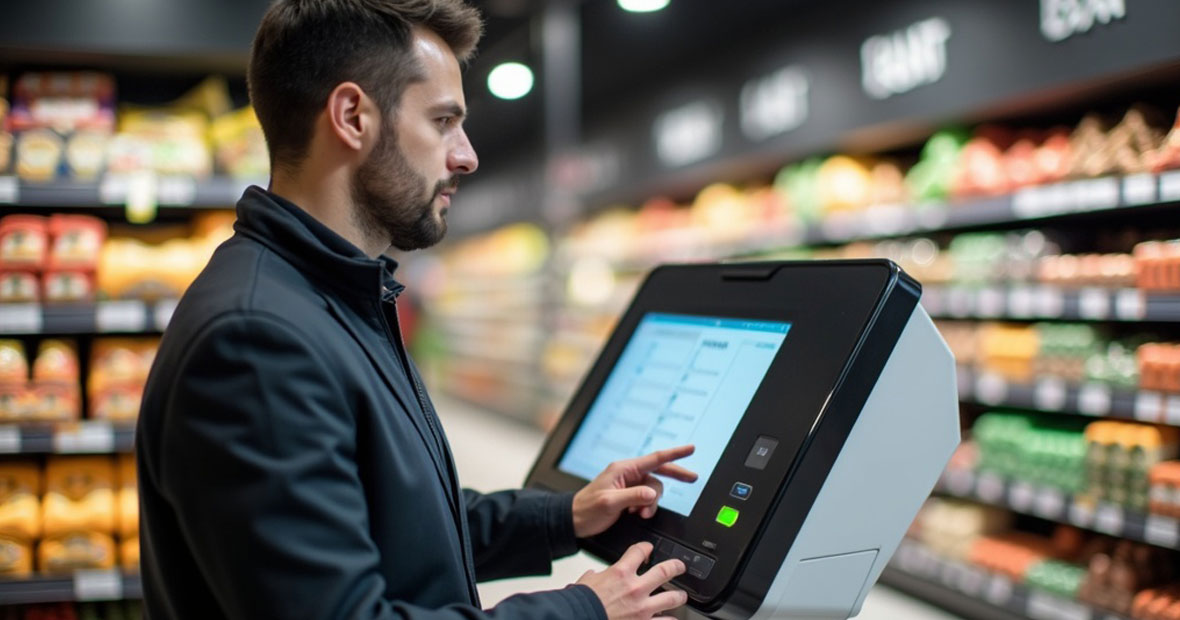
Kiosk printers are rapidly transforming retail operations by enabling faster checkout, bolstering security, and minimizing downtime. Placed directly at the point of sale, these compact, reliable devices play a vital role in delivering seamless customer journeys, optimizing store workflows, and supporting essential compliance needs.
Faster transactions and improved flow
Retail environments thrive on speed. Every second shaved off the checkout process contributes to improved customer satisfaction and reduced queues. Kiosk printers excel in this realm—using thermal technology, they can deliver print speeds of up to 250–300 mm/s, dramatically outperforming inkjet or laser counterparts.
The result? Instant receipt issuance. This rapid output keeps customer lines moving and frees staff to focus on upselling, assistance, or inventory tasks—enhancing both experience and productivity. Quick printing also reduces the risk of mis-scans or errors that can arise during busy peak periods.
Compact design for tight checkout areas
Retail counter space is a valuable and limited resource. Kiosk printers leverage their compact footprints to integrate directly into kiosks, counters, or payment terminals—without cluttering the workspace.
Their minimal size and modular structure allow retail integrators to embed them neatly alongside touchscreen displays and card readers. This results in sleek, ergonomic installations that enhance the store aesthetic and reduce counter-level equipment congestion.
Reliability in demanding environments
Retail environments are fast-paced and, at times, harsh—dust, spills, and accidental knocks are common. Thermal kiosk printers, designed with minimal moving parts and sealed mechanisms, deliver superior reliability and uptime.
By eliminating ink cartridges and simplifying internal mechanics, these printers reduce maintenance needs and avoid mechanical failures. As a result, stores experience fewer service visits, fewer technician call-outs, and longer periods without interruptions.
Print clarity for compliance and customer trust
Receipts are more than transactional proof—they are legal documents, return records, and marketing tools. Thermal printing produces smudge‑resistant, crystal‑clear receipts that remain legible for months, a critical requirement for returns, audits, and warranty claims.
Quality printing ensures barcodes, transaction details, and promotional messaging remain intact—bolstering both customer trust and store compliance.
Quiet operation and improved ambiance
Noise pollution can degrade the retail experience, especially in boutique or hospitality contexts. Thermal kiosks operate virtually silently, avoiding the mechanical hum and clatter of impact printers.
This quiet performance supports a calmer, more pleasant shopping environment—allowing staff to have more natural conversations and customers to enjoy a relaxed, dignified checkout.
Eco‑friendly and cost‑effective
Thermal printing offers both environmental and economic advantages. It eliminates the need for ink or toner cartridges—significantly reducing waste. Moreover, these printers consume less energy than traditional systems, contributing to greener store operations.
With lower operational costs and fewer consumables, retailers benefit from reduced overhead on printing—an advantage that quickly outweighs the initial hardware outlay.
Enhanced transaction security
Receipts include sensitive information—store name, purchase amounts, loyalty numbers. Thermal kiosk printers help maintain receipt integrity by avoiding accidental smudging and offering high-resolution output.
They also integrate seamlessly with POS systems, enabling secure, real-time communication of transaction data. This ensures accurate logging, fraud prevention, and compliance with financial regulations.
Minimal maintenance and fast media replacement
Retail staff are often not technical specialists, so ease of use is essential. Kiosk printers feature tool‑free roll loading, sensor‑monitored paper usage, and intuitive error messaging.
These user‑friendly designs allow non‑technical personnel to reload paper or clear jams in seconds—dramatically reducing kiosk downtime and freeing technicians for more pressing tasks.
Integration with omnichannel and emerging technologies
Retail is rapidly evolving. Today’s stores incorporate click‑and‑collect kiosks, digital coupons, and self‑ordering terminals. Kiosk printers are the backbone of these diverse applications—providing receipts, pickup vouchers, or digital ticketing directly to consumers.
Their compatibility with touchscreen systems, barcode scanners, and cloud‑based platforms enables seamless omnichannel experiences and supports future‑proof retail expansion.
Case in point: photo print kiosks in stores
Photo print kiosks, popular in drugstores and electronics retailers, illustrate the adaptability of kiosk printers. These stations allow customers to upload images from mobile devices, customize formats, and print on-site quickly and reliably—even in busy, multi-user environments.
Again, speed, clarity, and ease of maintenance are key—ensuring customers leave with high-quality photo prints and a positive brand impression.
Future outlook: AI‑driven kiosk enhancements
Retail is entering a new era of smart AI and cloud-based kiosks. Printer components remain vital in supporting these next-gen systems—providing real-time receipts, interactive survey tickets, and dynamic vouchers.
As voice-guided shopping, personalized promotions, and 24/7 unattended kiosks become mainstream, thermal printers will continue to serve as the reliable, silent, and efficient endpoint of these immersive customer interactions.
What retailers gain by investing in kiosk printing
Kiosk printers are much more than receipt dispensers—they are essential enablers of efficient, secure, and customer-centric retail experiences. By combining speed, reliability, clarity, and compact design, they help retailers streamline operations, enhance ambiance, and support both current and emerging retail formats. Choose wisely, and these devices will pay dividends in store performance, customer loyalty, and operational resilience.